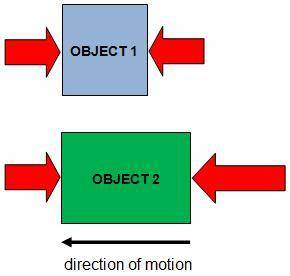
Object 1 has forces with identical magnitudes being applied to opposite sides, and it is remaining stationary. Object 2 has forces with different magnitudes being applied to opposite sides, and it is accelerating. Why is object 2 accelerating, while object 1 remains stationary?


Answers: 3
Another question on Physics

Physics, 21.06.2019 21:30
In a load, the load is paralel to the shaft. n a. angular n b. thrust n c radial n d. none of the above
Answers: 1

Physics, 22.06.2019 14:30
What conclusion can be made based on the temperature of soil when the light hits the soil at 0°, 45°, and 90° angles in section 2 of the experiment? did your results support your hypothesis? why or why not?
Answers: 1

Physics, 22.06.2019 21:00
Which of the following statements comparing electron microscopy and light microscopy is false? which of the following statements comparing electron microscopy and light microscopy is false? both the electron microscope and the light microscope use the same wavelengths for illumination. images produced by light microscopes can be in color, whereas electron microscope images are black and white unless they are artificially colored. the electron microscope has greater resolution than the light microscope. electron microscopes can allow examination of viruses and internal cell structures, whereas light microscopes are limited to objects that are 0.5 micrometers and larger. request answer
Answers: 2

Physics, 22.06.2019 23:00
Acommon technique in analysis of scientific data is normalization. the purpose of normalizing data is to eliminate irrelevant constants that can obscure the salient features of the data. the goal of this experiment is to test the hypothesis that the flux of light decreases as the square of the distance from the source. in this case, the absolute value of the voltage measured by the photometer is irrelevant; only the relative value conveys useful information. suppose that in part 2.2.2 of the experiment, students obtain a signal value of 162 mv at a distance of 4 cm and a value of 86 mv at a distance of 5.7 cm. normalize the students' data to the value obtained at 4 cm. (divide the signal value by 162.) then calculate the theoretically expected (normalized) value at 5.7 cm.
Answers: 2
You know the right answer?
Object 1 has forces with identical magnitudes being applied to opposite sides, and it is remaining s...
Questions


Mathematics, 29.06.2019 01:30









History, 29.06.2019 01:30











